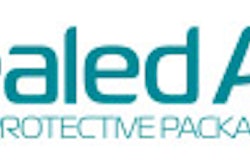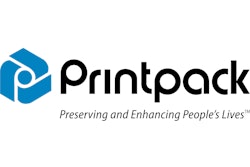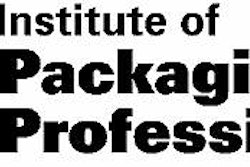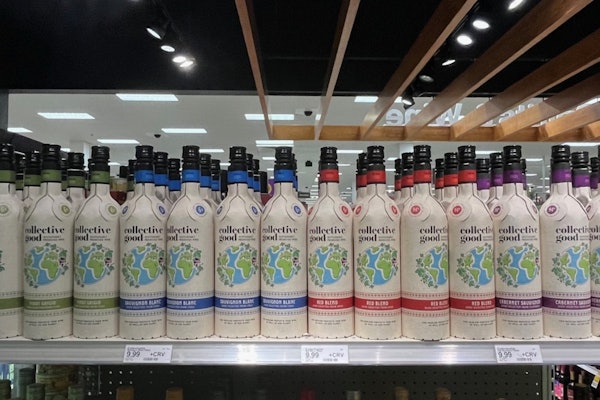PW: How many students are enrolled in the program, and what are its graduation requirements?
RT: Clemson University student attendance averages 14ꯠ total; with about 150 full-time in packaging. We have December, May, and August graduations. To earn a Bachelor of Science in packaging science requires 136 semester hours in all, with roughly half general education courses and half for major and minor courses related to packaging science. A student has to have 30 semester hours of packaging science courses.
Students are also required to experience a six-month industry co-op. That means they earn class credit while they work with companies all across the country. We have a Cooperative Education Program that coordinates most of that activity. Companies come here to our campus, interview students, and hire student co-ops like they would for a regular job. Students do a variety of tasks that depend on what the company requires. Companies are interested because it gives them an early chance to look at some talent. It’s like a long interview process. They’ll bring in the student and get them involved in projects such as packaging design, testing programs, and specifications. We certify the co-op job through our Office of Cooperative Education. On average, we have about 50 different companies involved.
PW: Can students customize the program to their interests?
RT: Packaging science is one degree, but within that degree you can take an emphasis, which is much like a minor, in a specific or customized area. A student could major in packaging science, with a minor or emphasis in business/sales/marketing, or graphics and design, or maybe materials science.
PW: Describe Clemson’s interaction with other packaging schools.
RT: The packaging school and certification started in 1988 with the acceptance of the degree by the South Carolina Commission on Higher Education. Today there are only five schools with four-year degrees in packaging science. There’s a collegial approach between the schools in that you cooperate and exchange, but you also compete. We’re separated enough regionally that we have our territories. We all know each other fairly well, and students get together once a year from all the schools for a packaging student conference that rotates among the schools. The other meeting place is Pack Expo. We typically take about 40 students, and it’s a great opportunity for our students to interact with students from the other schools.
PW: Describe the role of packaging suppliers with the program.
RT: Our offices and classrooms are in one building. We share classrooms with other departments. We have two major laboratories in an adjacent building. One is called the [b]Sonoco[n] Packaging Laboratory, and the other is the [b]DuPont[n] Packaging Evaluation Laboratory. Our new Center of Excellence for Flexible Packaging (CEFPACK) (see p. 00) will be housed in the DuPont Laboratory. We have also received considerable support from Cryovac and Printpack. Those have been the major supporters for the packaging science program. These and many other companies have generously donated equipment, their time and their knowledge to support our program.
PW: Does the program have an identity that makes it unique?
RT: The university and the packaging science program have a major interest in materials science. Every program needs to develop an identity. We’ve identified three ideas where we really want to focus: materials science, food packaging, and distribution packaging.
PW: Why does the school have such a focus on flexible packaging?
RT: Somewhere along the way, you need to decide what you can market to students and to the packaging business. I want the industry to understand that we do have a strong focus on flexible packaging, and materials science is the core behind that. We do not want to isolate or eliminate other packaging forms because there’s always going to be a mix and all are important, but flexibles are currently a dynamic area for innovation, design, and materials.
PW: Is there an effort to build flexibility into the curriculum?
RT: There are constant changes made to the curriculum. Part of it is that the program currently requires 136 hours, which is a big load. We probably need to pare that down to around 125 hours, especially with the co-op time in addition to that. We never make changes in a vacuum. We do it with our advisory board of 20 or so professionals from all different facets of the packaging business with whom we meet twice a year. One of the major things we discuss is curriculum. It takes up about half the meeting. It’s good for our industry board to come in and say, “Now you need to be doing this… New concepts come along quickly, such as supply chain management, cradle-to-cradle issues, environmental issues, and radio-frequency identification. If you’re not careful, your curriculum will get old and you can find yourself not teaching the things that need to be taught. Then your students will be going out not very well prepared to communicate new concepts.
The course that gets the most constant revision is our senior design course, which we consider our "capstone" senior course. Students don’t take it until they’ve had the co-op and other courses. We divide them into teams of three or four students, and each group addresses a real problem with professional packaging representatives. It replicates the real world with a customer that has a problem that students solve by talking to different people, specifying materials, and determining costs. At the end of the semester, students and packaging professionals meet on campus. Students have a certain amount of time to explain to the representatives what they did, what they found out, and to sell the companies on their solutions. The students do it as a team with each person contributing to the presentation, so it encourages teamwork and interaction.
PW: Do students have favorite courses?
RT: Favorite courses for students vary from semester to semester and depend more on the instructor. It’s a people business that goes back to a point of numbers. We have 10 faculty members and 150 to 160 students. That’s a very good ratio. There’s no real pressure on us from the university to have more students. It gives us the opportunity to do all the things we like to do and provide personal advising and interaction. I think the advantage we have is a big campus and big campus feel, but with a good student-teacher ratio in the packaging program. That benefits students in the labs, where we want them to be able to use the equipment and get their hands on things, and learn that it’s okay to make a mistake.
PW: How do you keep valuable faculty members?
RT: Our teachers constantly receive offers from industry, and we’re trying to keep them. Actually we’re trying to get them here from industry. I think you bring in faculty members who really want to be here. They like to be teachers. They like the academic environment. Overall, our faculty has considerable industry experience.
PW: Does the program conduct research on alternative packaging materials?
RT: We’ve always worked with biopolymers such as proteins, carbohydrates, and anything from natural resources that can be made into film, coatings, or laminates. We look at material made from shellfish, soy proteins, starch, and polylactic acid, not just from an environmental perspective, but because these materials have some unique properties. One example would be edible films. And nanotechnology is an area where we can incorporate a lot of different types of active packaging concepts.


























